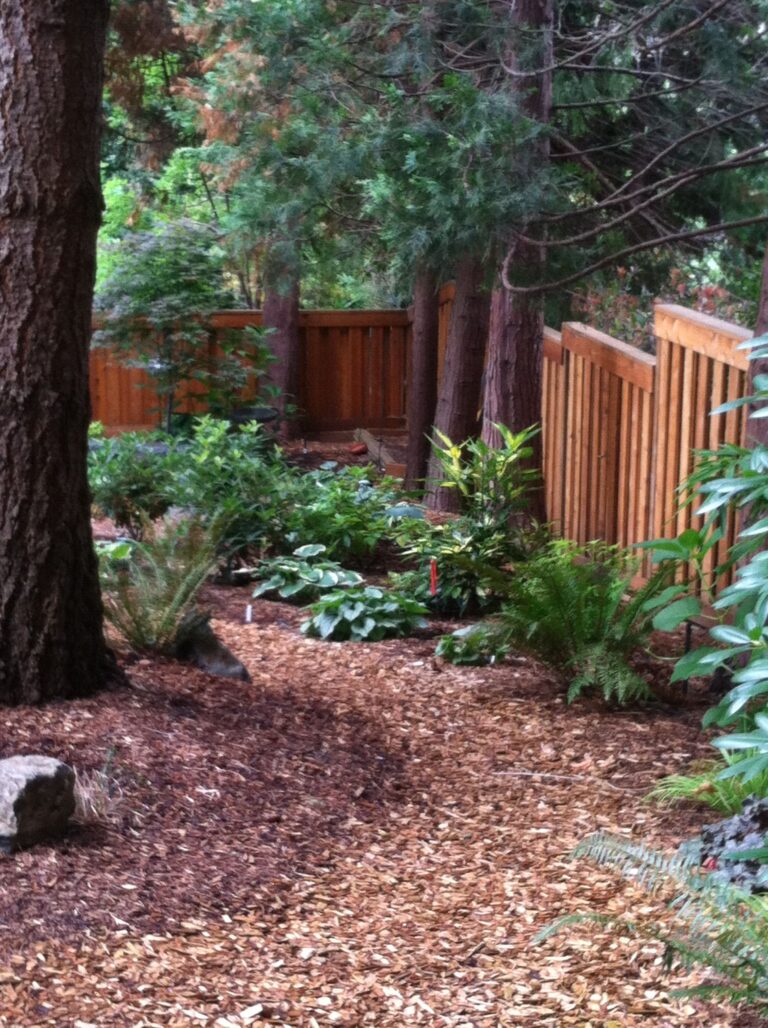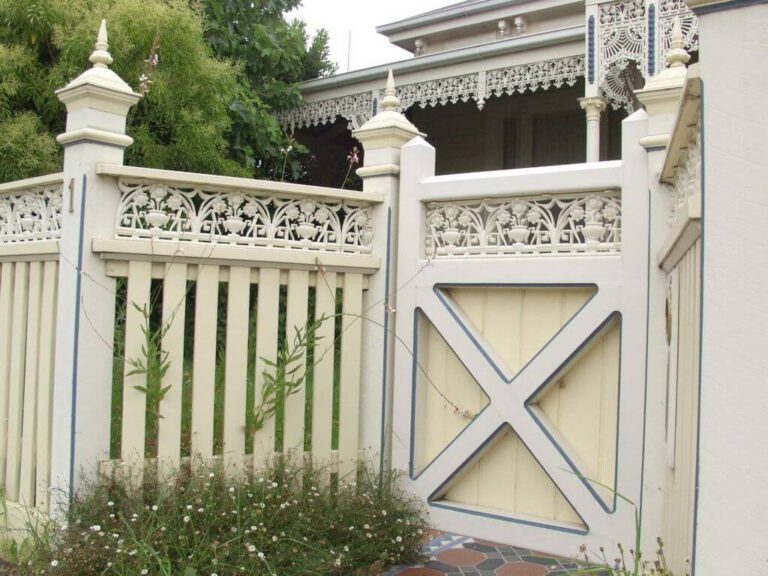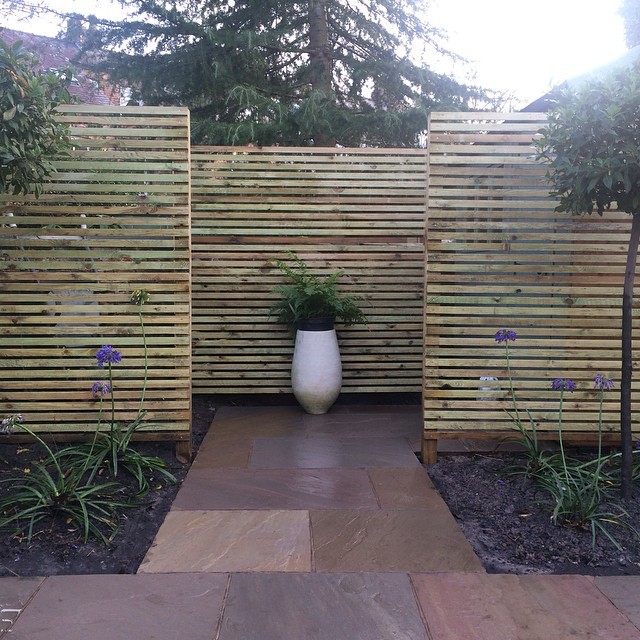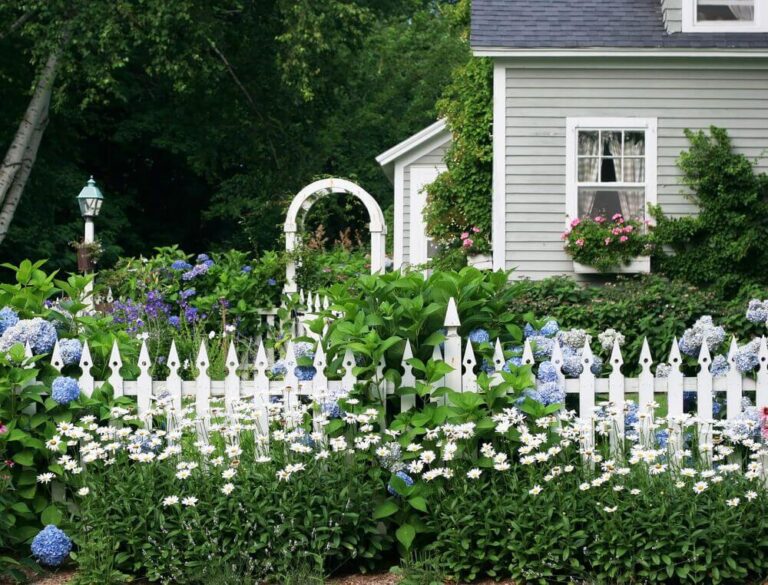When dealing with sloped landscapes, fencing solutions need to be adaptable and versatile to account for the variations in terrain. Fencing options such as stepped or racked panels, contour or terraced fence lines, and retaining walls can effectively address the challenges posed by sloped landscapes, ensuring security, privacy, and aesthetic appeal.
These innovative solutions not only provide practical benefits but also enhance the visual appeal of the outdoor space.
Properly designed fencing can integrate seamlessly with the natural elements of the landscape, offering a harmonious and functional solution for property owners.
Understanding the specific needs of the sloped terrain and selecting the right fencing options can make a significant difference in both the appearance and functionality of the outdoor environment.

The Challenge Of Sloped Landscapes
When it comes to landscaping, managing sloped terrain can present challenges, especially when it comes to installing fencing.
An excellent solution for these challenges is Professional Fencing Installation Services in Vacaville, which specializes in tailoring fencing solutions to unique landscape features, including sloped terrains.
Their expertise ensures that your fencing not only meets functional requirements but also complements the aesthetics of your landscape.
Understanding The Impact Of Sloped Landscapes On Fencing
Sloped landscapes can have a significant impact on the installation and effectiveness of fences.
The degree of slope, soil condition, and water drainage patterns can all influence the performance of fencing.
In addition to the physical aspects, visual integration with the natural features of the landscape is also crucial for a harmonious look.
Understanding these impacts is essential for designing and installing effective fencing on sloped terrains.
Factors To Consider When Installing Fences On Sloped Terrain
Slope Gradient: The steepness of the slope is a crucial factor in determining the type of fencing that can be installed. It influences the structural stability of the fence and the method of installation required.
Soil Erosion: Sloped landscapes are prone to soil erosion, which can impact the longevity of the fence. Considering erosion control measures in the fencing design is essential to prevent soil displacement and maintain the integrity of the installation.
Drainage: Proper water drainage is vital for landscapes with slopes. Fencing solutions need to accommodate these drainage patterns to prevent water accumulation and potential damage to the materials.
Material Selection: The choice of fencing materials is crucial when addressing sloped landscapes. Lightweight and flexible materials may be more suitable for accommodating uneven terrain while maintaining structural integrity.
Installation Techniques: Specialized installation techniques, such as step-tread and contour processes, may be required for installing fences on sloped terrains.
These techniques ensure a secure and visually appealing installation that complements the natural contours of the land.
Choosing The Right Fencing Materials
When it comes to fencing solutions for sloped landscapes, choosing the right materials is crucial to ensuring both functionality and aesthetics.
Sloped terrains present unique challenges that require careful consideration of fencing materials.
From durability to adaptability, different materials offer various benefits and drawbacks when used on sloped landscapes.
Evaluating The Best Fencing Materials For Sloped Landscapes
When evaluating the best fencing materials for sloped landscapes, it’s essential to consider the terrain’s incline and the material’s ability to adapt to uneven ground.
Here’s a breakdown of the benefits and drawbacks of various fencing materials on sloped terrains:
Benefits And Drawbacks Of Various Fencing Materials On Sloped Terrains
Wood
- Benefits
- Natural and aesthetically pleasing
- Can be customized to fit the slope
- Drawbacks
- Prone to rot and decay if not properly maintained
- May require more maintenance on sloped terrains
Aluminum
- Benefits
- Durable and low-maintenance
- Lightweight and easy to install on slopes
- Drawbacks
- May not provide as much privacy as other materials
- Can be more expensive initially
Wrought Iron
- Benefits
- Sturdy and long-lasting
- Offers a classic and elegant look
- Drawbacks
- Heavy and may require professional installation on slopes
- May require maintenance to prevent rust
Installation Techniques For Sloped Landscapes
When installing fences on sloped landscapes, it’s important to utilize specific techniques to ensure stability, durability, and aesthetic appeal.
In this guide, we’ll explore the step-by-step process and best practices for installing fences on sloped terrains.
Step-by-step Guide For Installing Fences On Sloped Landscapes
Installing fences on sloped landscapes requires careful planning and execution to ensure a professional and durable result. Here’s a step-by-step guide for successfully installing fences on sloped terrains:
Survey the Slope: Before you begin, survey the slope to determine the degree of incline and identify any obstacles or irregularities that may impact the installation process.
Choose the Right Materials: Select fencing materials that are suitable for sloped landscapes. Consider using flexible materials such as wire mesh or adjustable panels for ease of installation.
Prepare the Ground: Clear and level the ground where the fence will be installed. Address any uneven areas or debris to create a stable foundation.
Install Fence Posts: Utilize longer posts to accommodate the slope and ensure proper depth for stability and support. Consider using angled posts to follow the contours of the landscape.
Adjust Fence Panels: Use adjustable or customizable panels to accommodate the slope. Ensure panels are installed parallel to the ground for a professional finish.
Secure and Finish: Secure the fence panels and add any additional support or bracing as needed. Finish the installation with any necessary trim or finishing touches.
Best Practices For Ensuring Durability And Stability Of Fences On Sloped Terrains
Implementing best practices is essential to ensure the longevity and stability of fences on sloped terrains. Here are some key best practices to consider:
Proper Drainage: Ensure that adequate drainage is maintained to prevent water from pooling around the fence and causing structural issues.
Reinforcement: Consider reinforcing the foundation or posts with additional support or bracing to counteract the effects of gravity on sloped inclines.
Regular Maintenance: Perform routine inspections and maintenance to address any wear or damage caused by natural elements or shifting terrain.
Aesthetics: Opt for fencing styles and materials that complement the natural slope of the landscape for an integrated look.

Frequently Asked Questions
What Is The Easiest Fence To Install On A Slope?
The easiest fence to install on a slope is a stepped fence. It follows the contour of the land by creating a series of stepped panels to accommodate the slope.
This allows for a smooth and level appearance while ensuring proper installation.
What Is The Best Fence For Hilly Terrain?
The best fence for hilly terrain is a welded wire fence. It provides stability and flexibility. With its ability to contour to the land, it is a cost-effective and durable option for hilly areas.
How Do You Support A Fence On A Slope?
To support a fence on a slope, use stepped panels or stair-stepping the fence. Install the fence in small sections, adjusting the height as needed.
Use longer posts on the downhill side and shorter posts on the uphill side. This method provides stability on the uneven terrain.
Conclusion
In a nutshell, fencing on sloped landscapes must be carefully planned for safety and aesthetics.
Consider the material, design, and installation methods to ensure maximum functionality. Investing in professional expertise and high-quality materials is crucial for long-term benefits.
By addressing the challenges unique to sloped landscapes, you can create a beautiful and secure outdoor space.







